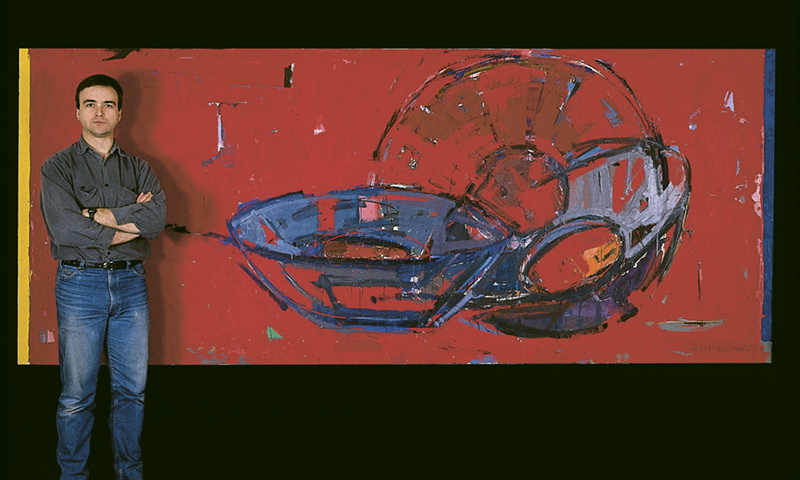Born in Poland, Andrzej Siwkiewicz received his MFA in painting, sculpture and printmaking from the Academy of Fine Arts in Warsaw and an MFA in painting and printmaking from the RIT School of Art and Design, Rochester, NY. While in Rochester along with working on his graduate thesis Andrzej Siwkiewicz curated a number of shows, including solo exhibitions of late Walter Prochownik, an upstate NY artist, as well as Judd Lawrence Williams and a young Serbian artist Endi Poskovic among others.
In 1996 Siwkiewicz moved to Cleveland where he opened his painting and printmaking studio in the old textile warehouse district. Since then he has been exhibiting in local and regional venues. At its inception he joined CAAW (City Artists At Work), a local group of artists along the Superior Arts District in downtown Cleveland, supporting local art community as well as art education and outreach.
Working in collaboration with CSU Art Gallery Andrzej Siwkiewicz curated a show On The Other Side featuring artists of such disparate backgrounds as Kam Shun Lee from China, Yong Han of Korea, Tracy Heneberger from NYC and himself.
While his work from the 1990s often concerned dramatic world events such as Balkan wars and violence and atrocities in the context of human experience, his work in the 2000s was returning more to his interest of exploring individual relationships and existential contradictions through the human figure, including live studies. His more recent paintings focus on human figure studies, still lifes and spacial studies, inspired by landscape and interiors themes. His work is in private collections in Europe, the U.S. and Canada.
Some connect Siwkiewicz’s work to a sensibility in Polish Modernism that is coincident with the Neo-Expressionists in Western Europe and the United States. Siwkiewicz’s work explores personal and universal aspects of humanity as a whole as well an individual. He deals with concepts of isolation, boundaries and transgressions and violations of thereof. Inspired by European art of the early 20 century to American post war movements and late 20th century masters, he pursues his own vocabulary and esthetics within traditional media of painting, drawing and intaglio printmaking.
As New York art critic Robert Morgan noted in Siwkiewicz’s Chicago solo show catalog “his paintings often offer a fragmented metaphor of the body in an arbitrary psychic space. The formal relationships between the pictorial elements are tightly bound to the surface, thereby offering a tension between the elements that elicits a vision of inner-chaos, a turbulence that is inexorable and unmistakable in its coercion. The visceral impact in the work of Siwkiewicz is the issue at large. To receive the thought behind these paintings is to empathize with the artists struggle in securing a sense of ones cultural identity in an increasingly abstract world.”

